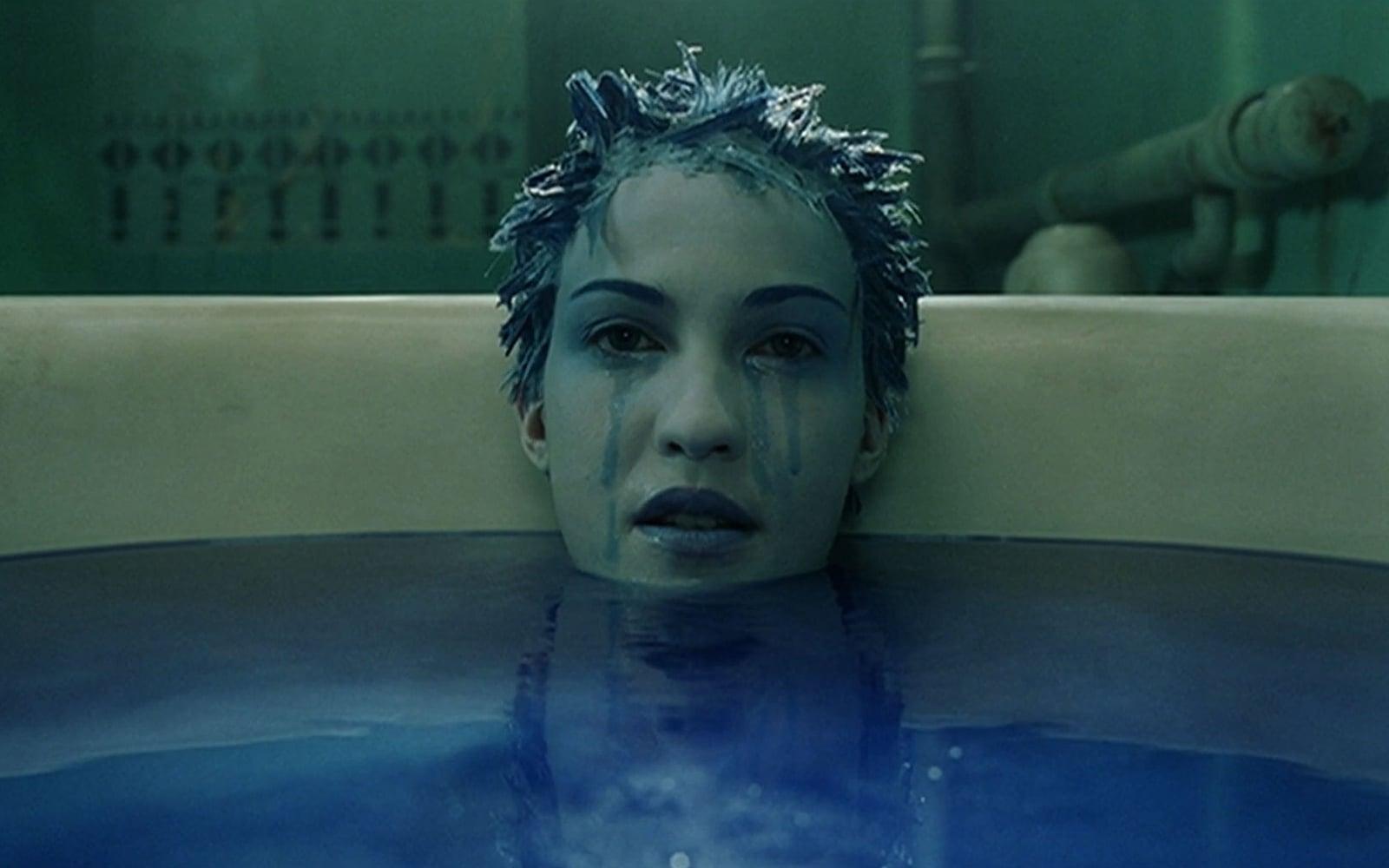Immortal by Enki Bilal (Review)

Set in New York City circa 2095, Immortal opens with a mysterious pyramid suddenly appearing in the skies above the city. The ancient Egyptian gods have returned to Earth in order to judge Horus, the god of heaven. Horus has 7 seven days to find a “compatible” mate and sire offspring, or else he will lose his immortality. Of course, the humans, aliens, and mutants below know none of this. All they know is that a mysterious artifact is floating above their heads. That, and a mysterious serial killer is stalking the city streets, killing their victims by making them explode.
Meanwhile, a mysterious white-skinned, blue-haired woman named Jill has been picked up by the malevolent Eugenics Corporation. And a noted anarchist named Nikopol has just escaped from prison, causing all manner of anxiety with the city’s government. Meanwhile, Horus continues his search for a someone with whom to mate, and for a body that he can possess in order to do so. I think you can see where this is heading. Horus “joins forces” with Nikopol, who then tracks down Jill so Horus can have his way with her. Jill and Nikopol, who are both a little out of their league, begin falling for each other.
Meanwhile, there’s a great deal of confusion and obtuseness going on as well. Adapted by Bilal from his own comic books, Immortal oozes style, atmosphere, and ideas. Unfortunately, the result is less heady and mindblowing than it feels like it should be. Rather, it feels more like a trainwreck, albeit a one that looks pretty cool. Ideas and concepts are tossed about, always tantalizing the viewer but never really giving any satisfactory answers.
For example, what is Jill’s true nature? Is she human, an alien from another dimension, a goddess, or something else? Who is John, Jill’s mysterious benefactor that communicates to her via some sort of inter-dimensional portal? What is the Eugenics Corporation, and their role in all of this? Why does Nikopol know so much about Egyptian mythology? How does Horus’ impregnation help him in his bid for continued immortality, and why are the other gods so pissed at him? Why is Central Park cordoned off, with everyone who goes there ending up dead?
One part of the movie that I found rather disturbing was the burgeoning relationship between Horus/Nikopol and Jill. Horus is essentially raping Jill, using Nikopol as a human host. It gets more complicated when Nikopol and Jill begin falling for each other. Since Nikopol can’t control Horus, it’s impossible to tell is it’s really Nikopol that Jill is falling for, or Horus.
Eventually, it becomes something of a joke between the two, with Jill asking somewhat flippantly whether or not the rapist is present whenever she and Nikopol get intimate. With perhaps more development, more emphasis placed on the tragic situation the two find themselves in, their relationship might be a bit more worth caring about. But suffice to say, there’s a lot of nuance missing here.
Part of me thinks that much of the nuance, as well as many of the answers to the movie’s more enigmatic elements might lie in Bilal’s comic books (which I admittedly have not read). One can’t help but think that a lot was cut or trimmed during the adaptation process. Another part of me thinks that Bilal intentionally wanted to leave things vague, so as to put the viewer in a world that’s both strangely familiar yet totally alien. Whatever the case, the results are decidedly mixed and frustrating.
Whatever else you say about Immortal, it’s impossible not to point out the movie’s oftentimes astounding visuals, which make use of the same “digital backlot” technique used on Sin City, Casshern, and Sky Captain and the World of Tomorrow. The closest comparisons, though, are probably Stargate (the Egyptian elements) and The Fifth Element (the bustling city streets full of flying cars, Mimi Lempicka’s Gaultier-esque fashions, etc.).
However, Immortal often steps beyond both of those movies visually, due to the abundance of CGI-scapes. But while the movie’s visuals are often its strongest point, offering the viewer eye candy par excellence, they’re also it’s weakest as well. That’s largely due to the fact that, with a handful of exceptions, everything in the movie — sets, vehicles, and characters — is computer animated.
While the CGI is decent for the most part, it’s usually painfully obvious, especially when CGI “actors” are interacting with human ones. This disconnect proves rather jarring time and again. It’s understandable why so much CGI would be used, especially for the characters. In Immortal’s world, genetic manipulation has run amok, resulting in humans who look more alien than, well, the aliens. Humans are completely, 100% human are in the minority.
It’s understandable that CGI, with its limitless possibilities, would be used for such unique and bizarre characters as the terrible dayaks, human/hammerhead shark hybrids with blood-red skin and the ability to “swim” along the sides of buildings. But the melding of CGI with real elements (i.e. human actors) doesn’t work nearly as well as it needs to in order to prevent Immortal from looking like little more than a glorified video game (and you thought the The Matrix Reloaded’s “Burly Brawl” was bad).
Had the plot and characters been more compelling and/or coherent, this might not as big an issue. But with such a muddled plot, and such shallow characters, all that Immortal ultimately has going for it is its visuals, and those just aren’t quite enough.
